

BACTERIAL CANKER
Bacterial causal agent: Clavibacter michiganensis subsp. michiganensis

Wilting of leaves that may be unilateral and formation of light streaks up and down the outside of the leaf midrib, petiole and stem are symptoms of bacterial canker. The streaks may open to form cankers.

Progression of the symptoms on the entire plant followed by severe blighting and wilting of leaves in a protected structure production facility. The pathogen is seed-borne in nature.

Severe leaf blighting ("firing") under high disease incidence can be a characteristic symptom for bacterial canker, but phytotoxicity can also cause similar symptoms.
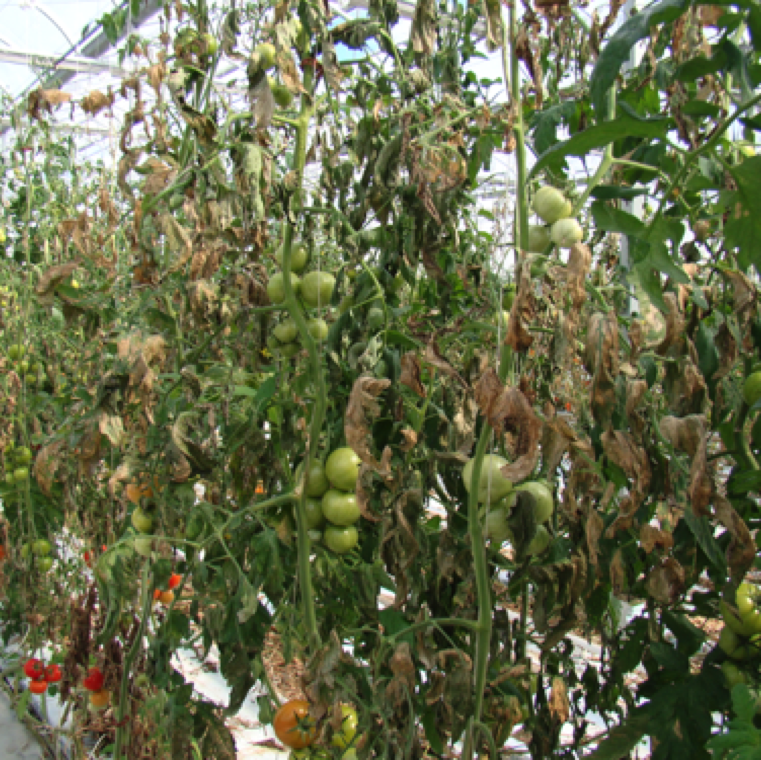
Severe leaf blighting in a greenhouse production where the spread of the disease has been attributed to the use of contaminated grafted plants following by spread through use of clippers.
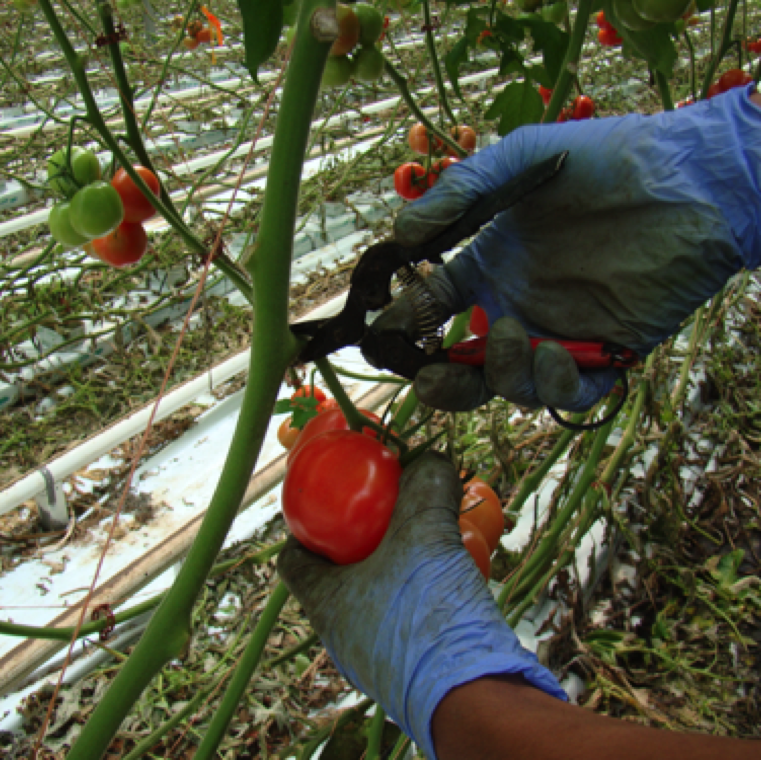
Removing suckers and fruits using clippers and pruners, and non-sanitation between use is a major mode of spread of the disease from plant to plant.
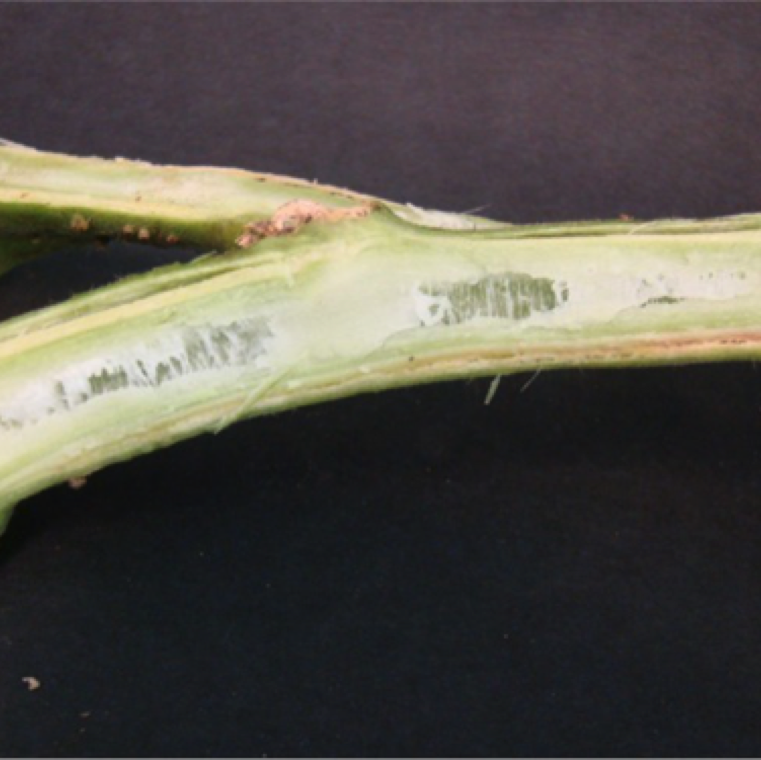
Infected plants when cut open will have discoloration of the vascular system and early stages of cankerous stem section formation can be noticed at nodes.
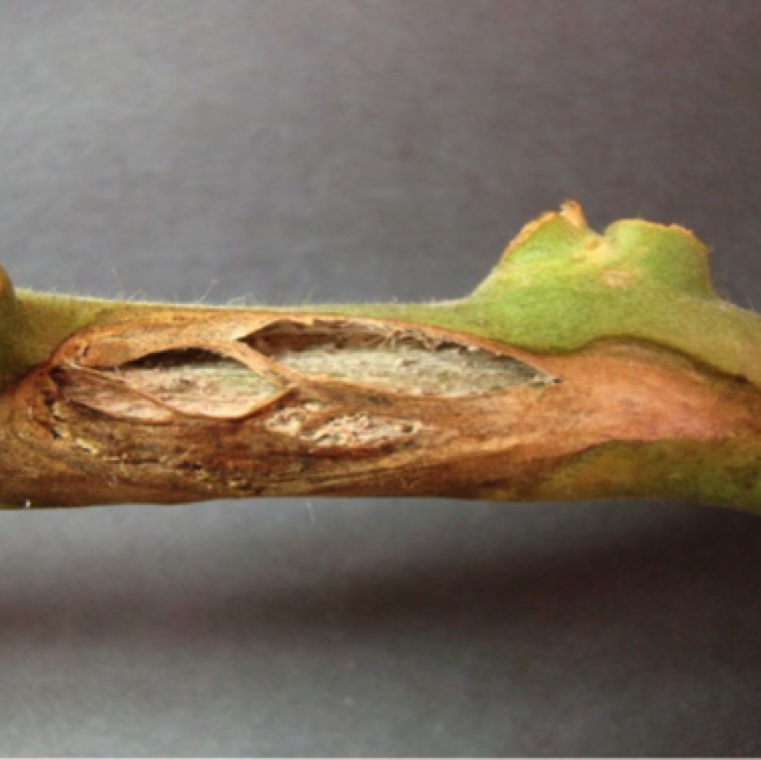
Cankerous stem on an infected tomato stem can be a characteristic symptom of the disease. But this symptom can be similar to those by some fungal diseases.
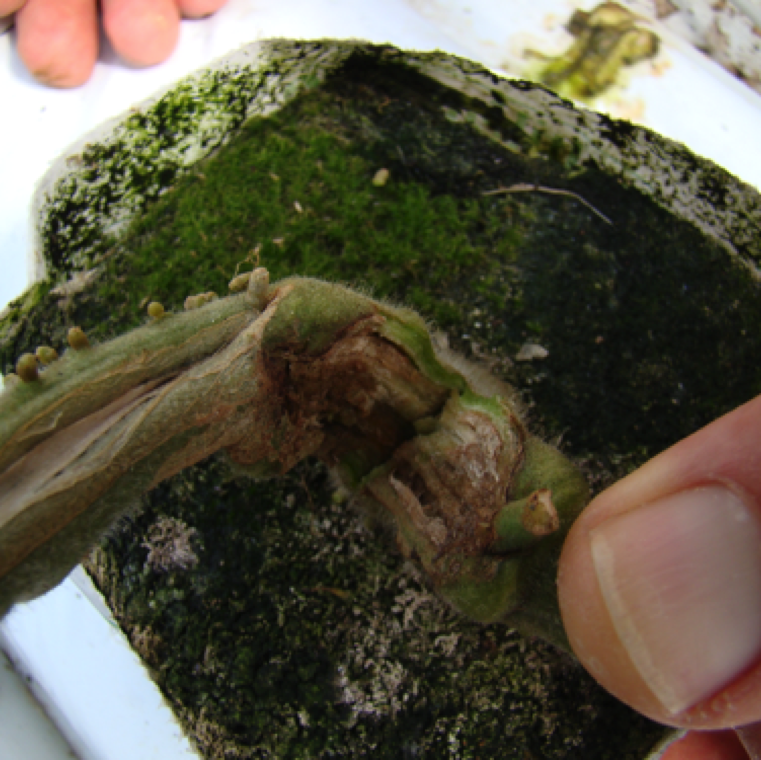
Vascular discoloration of the stem can be noticed in heavily infected plants. The bacterium while seed-borne, can spread through use of contaminated pruning knives and clippers.
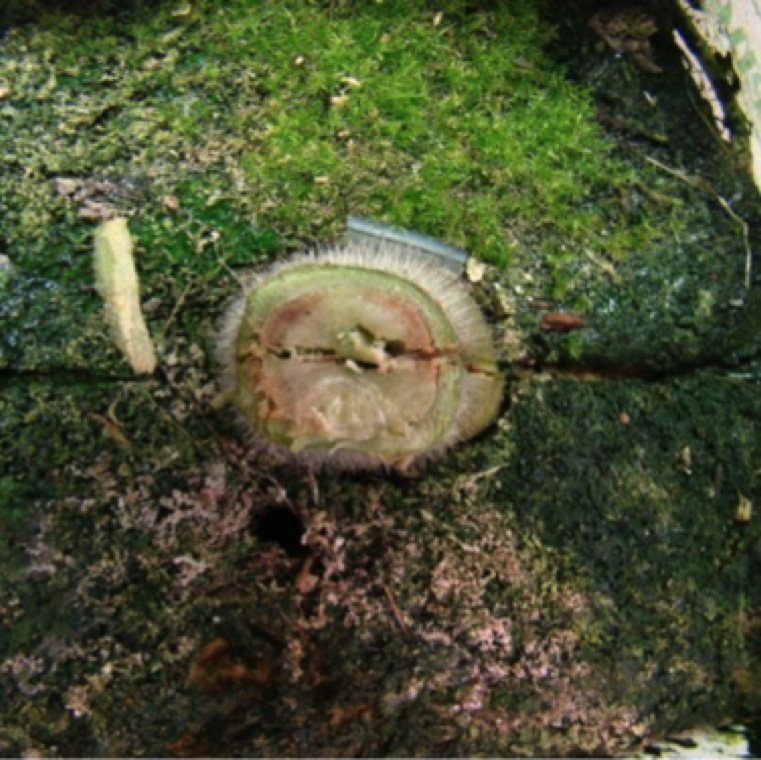
A cut portion of the stem indicating discoloration of the vascular system due to bacterial canker. Other bacterial and fungal diseases may cause similar symptoms.

Vascular discoloration on a grafted tomato at the graft union with two trained branches to the sides. Contamination of the pathogen during grafting from grafting knives can be an issue in production.
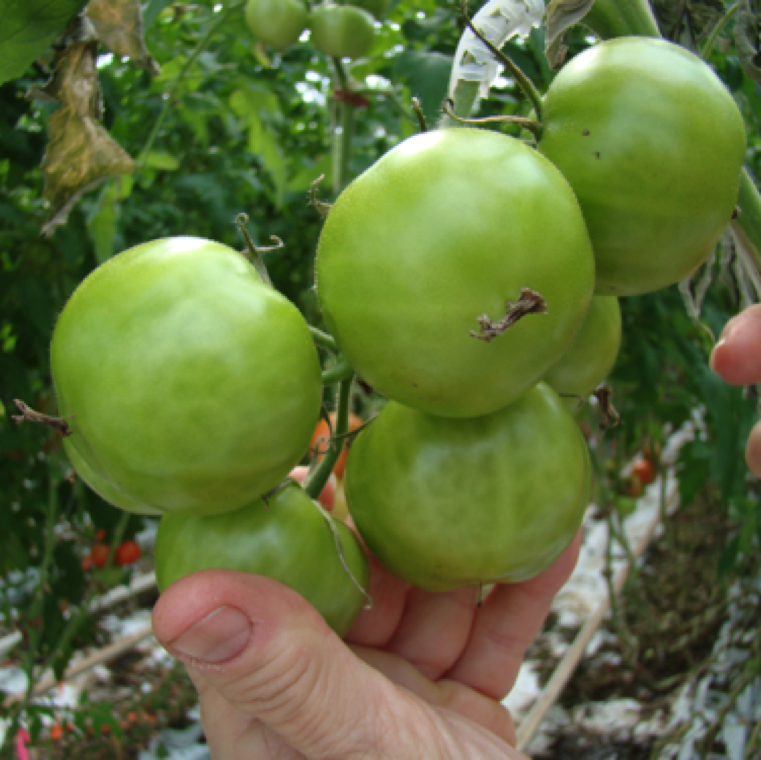
Mosaic/netted appearance of green fruits on symptomatic plants is another characteristic symptom associated with the disease and is commonly seen under greenhouse conditions.
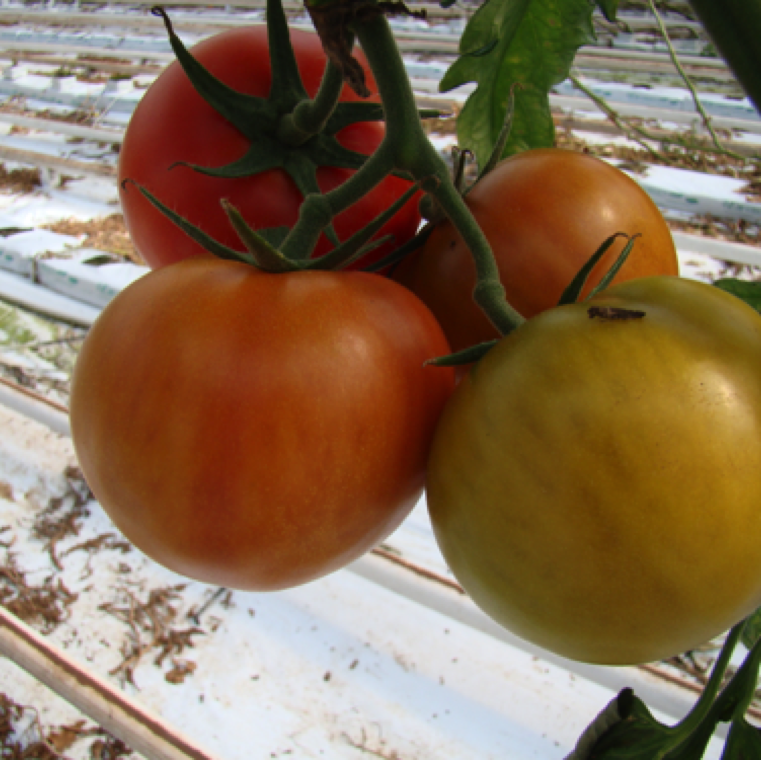
Mosaic/netted appearance of ripe fruits is also a noticeable symptom similar to that in green fruits. The fruits are non-marketable and can cause post-harvest issues in shipment.
Tomato diseases

